Nissan Leaf vs Renault Austral – Differences & prices compared
Compare performance, boot space, consumption and price in one view.
Find out now: which car is the better choice for you – Nissan Leaf or Renault Austral?
The Nissan Leaf (Hatchback) comes with a Electric engine and Automatic transmission. In comparison, the Renault Austral (SUV) features a Petrol MHEV or Full Hybrid engine with Automatic transmission.
When it comes to boot capacity, the Nissan Leaf offers 394 L, while the Renault Austral provides 555 L – depending on how much space you need. If you’re looking for more power, decide whether the 217 HP of the Nissan Leaf or the 200 HP of the Renault Austral suits your needs better.
In terms of consumption, the values are 16.70 kWh per 100 km for the Nissan Leaf, and 4.80 L for the Renault Austral.
Price-wise, the Nissan Leaf starts at 30800 £, while the Renault Austral is available from 29700 £. Compare all the details and find out which model fits your lifestyle best!
Nissan Leaf
The Nissan Leaf stands out as a pioneering model in the realm of electric vehicles, known for its impressive blend of practicality and eco-friendliness. It offers a smooth and quiet driving experience, making it an ideal choice for city commuting and longer journeys alike. The interior design is both comfortable and intuitive, providing drivers with a sense of modernity and ease of use.
details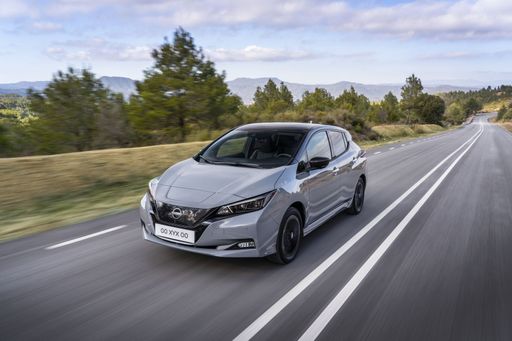 @ germany.nissannews.com
@ germany.nissannews.com
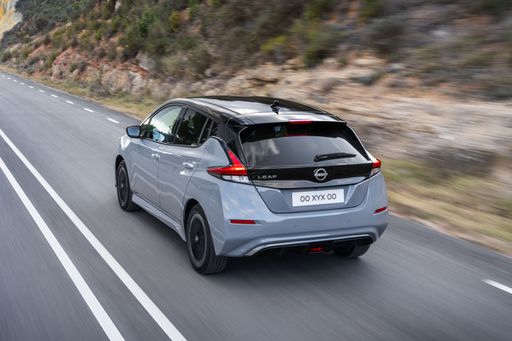 @ germany.nissannews.com
@ germany.nissannews.com
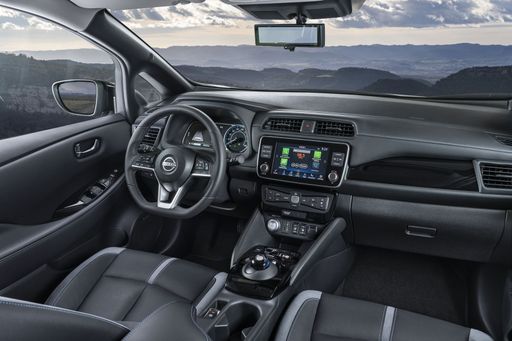 @ germany.nissannews.com
@ germany.nissannews.com
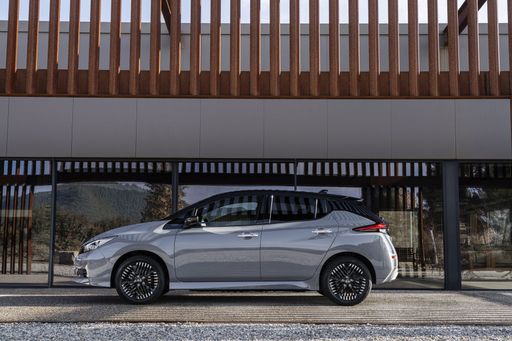 @ germany.nissannews.com
@ germany.nissannews.com
Renault Austral
The Renault Austral is a compact SUV that combines modern design with advanced technology, making it a standout in the crowded automotive market. Its sleek exterior styling is paired with a comfortable and spacious interior, providing a premium feel for passengers. With an emphasis on connectivity and innovation, the Austral ensures that drivers stay engaged and informed on every journey.
details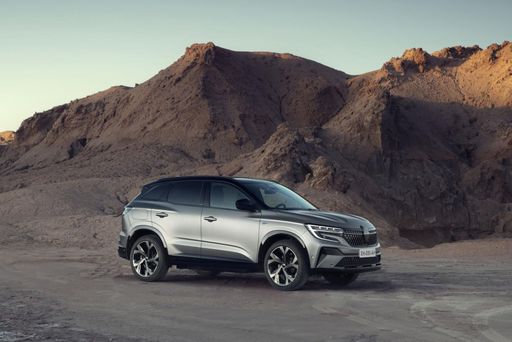 @ Renault
@ Renault
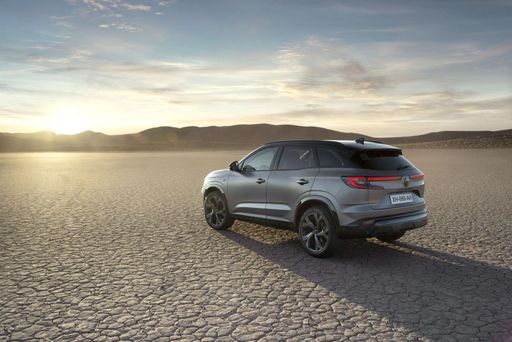 @ Renault
@ Renault
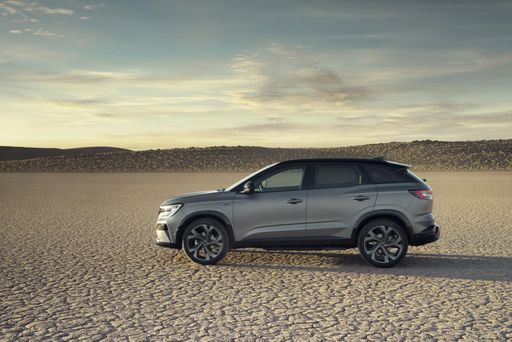 @ Renault
@ Renault
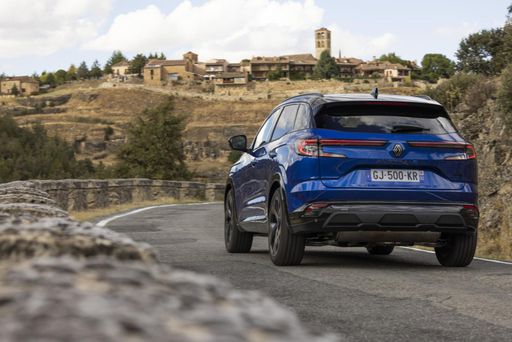 @ Renault
@ Renault
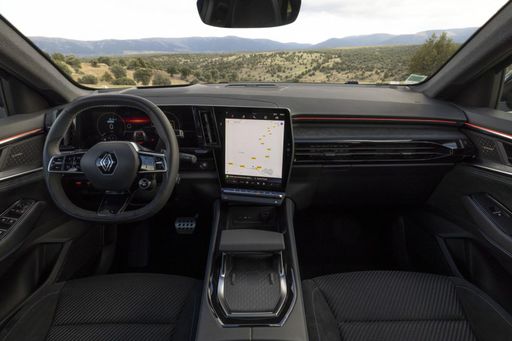 @ Renault
@ Renault
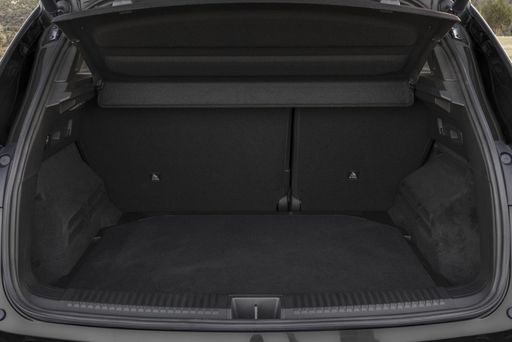 @ Renault
@ Renault

|

|
|
|
|
Costs and Consumption |
|
|---|---|
|
Price
30800 - 37200 £
|
Price
29700 - 37800 £
|
|
Consumption L/100km
-
|
Consumption L/100km
4.8 - 6.5 L
|
|
Consumption kWh/100km
16.7 - 17.8 kWh
|
Consumption kWh/100km
-
|
|
Electric Range
270 - 385 km
|
Electric Range
-
|
|
Battery Capacity
39 - 59 kWh
|
Battery Capacity
-
|
|
co2
0 g/km
|
co2
109 - 148 g/km
|
|
Fuel tank capacity
-
|
Fuel tank capacity
55 L
|
Dimensions and Body |
|
|---|---|
|
Body Type
Hatchback
|
Body Type
SUV
|
|
Seats
5
|
Seats
5
|
|
Doors
5
|
Doors
5
|
|
Curb weight
1580 - 1756 kg
|
Curb weight
1539 - 1613 kg
|
|
Trunk capacity
385 - 394 L
|
Trunk capacity
527 - 555 L
|
|
Length
4490 mm
|
Length
4533 mm
|
|
Width
1788 mm
|
Width
1825 mm
|
|
Height
1540 - 1545 mm
|
Height
1645 mm
|
|
Payload
384 - 415 kg
|
Payload
464 - 477 kg
|
Engine and Performance |
|
|---|---|
|
Engine Type
Electric
|
Engine Type
Petrol MHEV, Full Hybrid
|
|
Transmission
Automatic
|
Transmission
Automatic
|
|
Transmission Detail
Reduction Gearbox
|
Transmission Detail
Automatic Gearbox
|
|
Drive Type
Front-Wheel Drive
|
Drive Type
Front-Wheel Drive
|
|
Power HP
150 - 217 HP
|
Power HP
158 - 200 HP
|
|
Acceleration 0-100km/h
6.9 - 7.9 s
|
Acceleration 0-100km/h
8.4 - 9.7 s
|
|
Max Speed
144 - 157 km/h
|
Max Speed
180 km/h
|
|
Torque
320 - 340 Nm
|
Torque
270 Nm
|
|
Number of Cylinders
-
|
Number of Cylinders
3 - 4
|
|
Power kW
110 - 160 kW
|
Power kW
116 - 147 kW
|
|
Engine capacity
-
|
Engine capacity
1199 - 1332 cm3
|
General |
|
|---|---|
|
Model Year
2019
|
Model Year
2025
|
|
CO2 Efficiency Class
A
|
CO2 Efficiency Class
E, C
|
|
Brand
Nissan
|
Brand
Renault
|
Nissan Leaf
Introduction to the Nissan Leaf: A Pioneer in Electric Mobility
The Nissan Leaf has established itself as a trailblazer in the realm of electric vehicles (EVs) since its launch. As we delve into its present-day iterations, the Leaf continues to soar in popularity due to remarkable advancements in technology and sustainability. Let's explore what makes the Nissan Leaf a standout in today's automotive market.
Power and Performance: Under the Hood of the Nissan Leaf
The Nissan Leaf boasts a power output ranging from 150 to 217 PS, depending on the battery option chosen. The vehicle's electric motor, a product of cutting-edge engineering, offers instant torque ranging from 320 to 340 Nm, resulting in impressive acceleration capabilities. The 0 to 100 km/h dash is achieved in as little as 6.9 seconds, showcasing its prowess in electric performance.
Battery Technology: Efficient Energy Management
When discussing the Nissan Leaf, battery technology is at the forefront. The available battery capacities range from 39 to 59 kWh, supporting an electric range between 270 to 385 km. This flexibility allows drivers to choose a model that best fits their driving habits, providing peace of mind for longer journeys without frequent recharging.
Sustainability: The Environmental Edge
One of the primary attractions of the Nissan Leaf is its commitment to sustainability. As an all-electric vehicle, it produces zero CO2 emissions, placing it in the top tier of the CO2-efficiency class with an 'A' rating. This clean energy approach contributes significantly to reducing environmental impact and supports Nissan's drive towards a greener future.
Design and Comfort: Aesthetic Appeal and Practicality
The Nissan Leaf is not just about efficiency; it's also designed for comfort and utility. With its sleek hatchback body and dimensions of 4490 mm in length, 1788 mm in width, and a height of up to 1545 mm, it offers ample interior space. The boot capacity ranges from 385 to 394 litres, providing sufficient storage for everyday needs. The model accommodates five passengers comfortably, ensuring a pleasant ride for everyone.
Innovations and Safety: Advanced Features for Peace of Mind
Nissan equips the Leaf with an array of intelligent features that enhance safety and convenience. The available equipment lines, including N-CONNECTA, Tekna, e+ N-CONNECTA, and e+ Tekna, offer varying levels of technology integration. ProPILOT Assist, e-Pedal, and a comprehensive suite of driver-assistance technology are just a few examples that highlight Nissan's commitment to innovation in the EV market.
Conclusion: The Nissan Leaf Continues to Lead
With prices ranging from €35,900 to €43,400, the Nissan Leaf remains an attractive choice for those looking to embrace electric mobility. It perfectly balances performance, design, and sustainability, making it a compelling choice in the competitive EV landscape. The Nissan Leaf not only represents the future of driving but also reinforces why it continues to be a leader in the electric vehicle community.
Renault Austral
Introducing the Renault Austral: A New Era of Performance and Efficiency
Renault has once again set the bar high with the introduction of the Renault Austral. Blending cutting-edge technology with consistent design craftsmanship, the Austral is the perfect SUV for those who seek style and substance on the road. With a range of models available, the Austral caters not just to different preferences but showcases Renault’s commitment to innovation and sustainability.
Innovative Powertrains Tailored for Performance
The Renault Austral is available in two major powertrain options: the Mild Hybrid and the E-Tech Full Hybrid. Both options are designed to deliver efficient performance while minimizing the environmental footprint.
The Mild Hybrid variant, boasting 158 horsepower, integrates a 1.3-liter 4-cylinder petrol engine. It ensures smooth transitions with its front-wheel drive and automatic transmission. The Renault Austral Mild Hybrid achieves approximately 6.1 L/100 km, emphasizing an eco-friendly approach with its CO2 efficiency class E.
On the other hand, the E-Tech Full Hybrid version takes performance up a notch with 200 horsepower and a 1.2-liter 3-cylinder engine. This variant promises an astonishing fuel consumption of 4.7 L/100 km, accompanied by a class-leading CO2 efficiency (class C). The full hybrid system not only optimizes energy use but also provides a dynamic and spirited drive.
Technological Advancements and Features
Renault's focus on technology shines remarkably in the Austral. The automatic gearbox ensures seamless power delivery, allowing drivers to enjoy stress-free and smooth rides. With a top speed of 174 km/h, the Austral maintains agility and responsiveness during any journey.
Equipped with a robust torque of 270 Nm, Renault Austral provides sufficient pulling power, especially beneficial on tricky terrains or for carrying heavier loads. The Austral can accelerate from 0 to 100 km/h in approximately 9.7 to 8.4 seconds, depending on the variant, making it admirably swift for an SUV.
Striking Design and Spacious Comfort
The Renault Austral stands out with its sleek and dynamic design. Measuring 4,510 mm in length, 1,825 mm in width, and 1,618 mm in height, it's perfectly dimensioned for both city and off-road driving. Offering 5 seats, it ensures ample space and comfort for passengers, making it an ideal choice for family trips or long journeys.
With a trunk capacity of up to 500 liters, practicality is never compromised. Whether it's groceries or luggage for a weekend getaway, the Austral offers plenty of room. Its curb weight ranges between 1,539 to 1,592 kg, optimizing fuel efficiency while maintaining a sturdy build.
Price Points and Trim Levels
The Renault Austral offers a variety of trim levels to suit varying tastes and requirements. Starting at a competitive price of €34,250 and reaching up to €44,950, customers can choose from trims like the Evolution Automatik, Iconic Esprit Alpine Automatik, and Techno Multi-Mode-Automatik. Each trim combines premium features with state-of-the-art technology, ensuring value for money.
Conclusion: Renault's Commitment to the Future
The Renault Austral is not just about moving forward; it represents a journey toward innovation and environmental responsibility. Whether selecting a mildly efficient hybrid or opting for the full hybrid marvel, drivers will appreciate the engineering excellence and thoughtful design that the Austral offers. Renault continues to pave the way for sustainable motoring, and the Austral is yet another milestone in their illustrious automotive legacy.
The prices and data displayed are estimates based on German list prices and may vary by country. This information is not legally binding.
